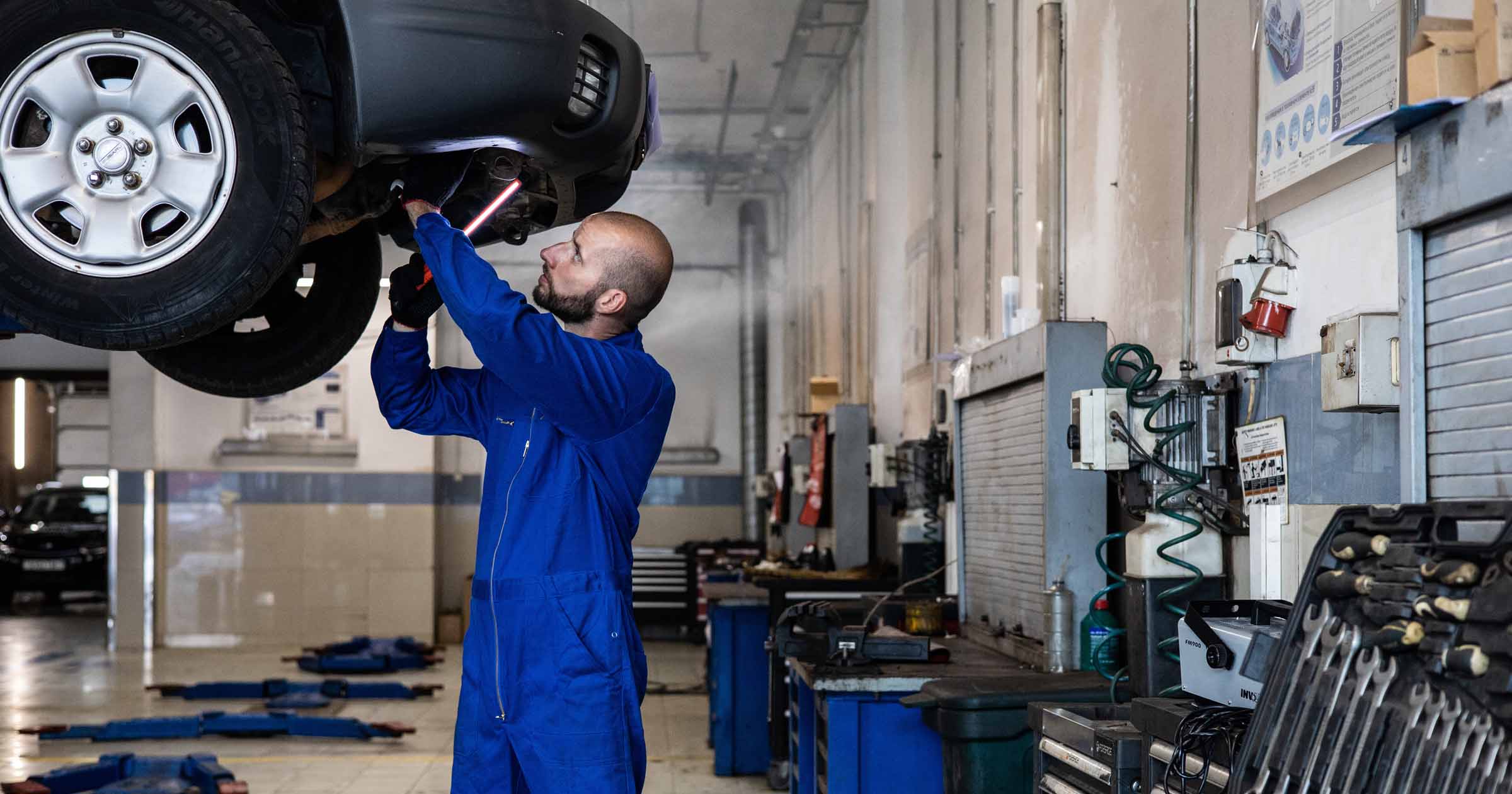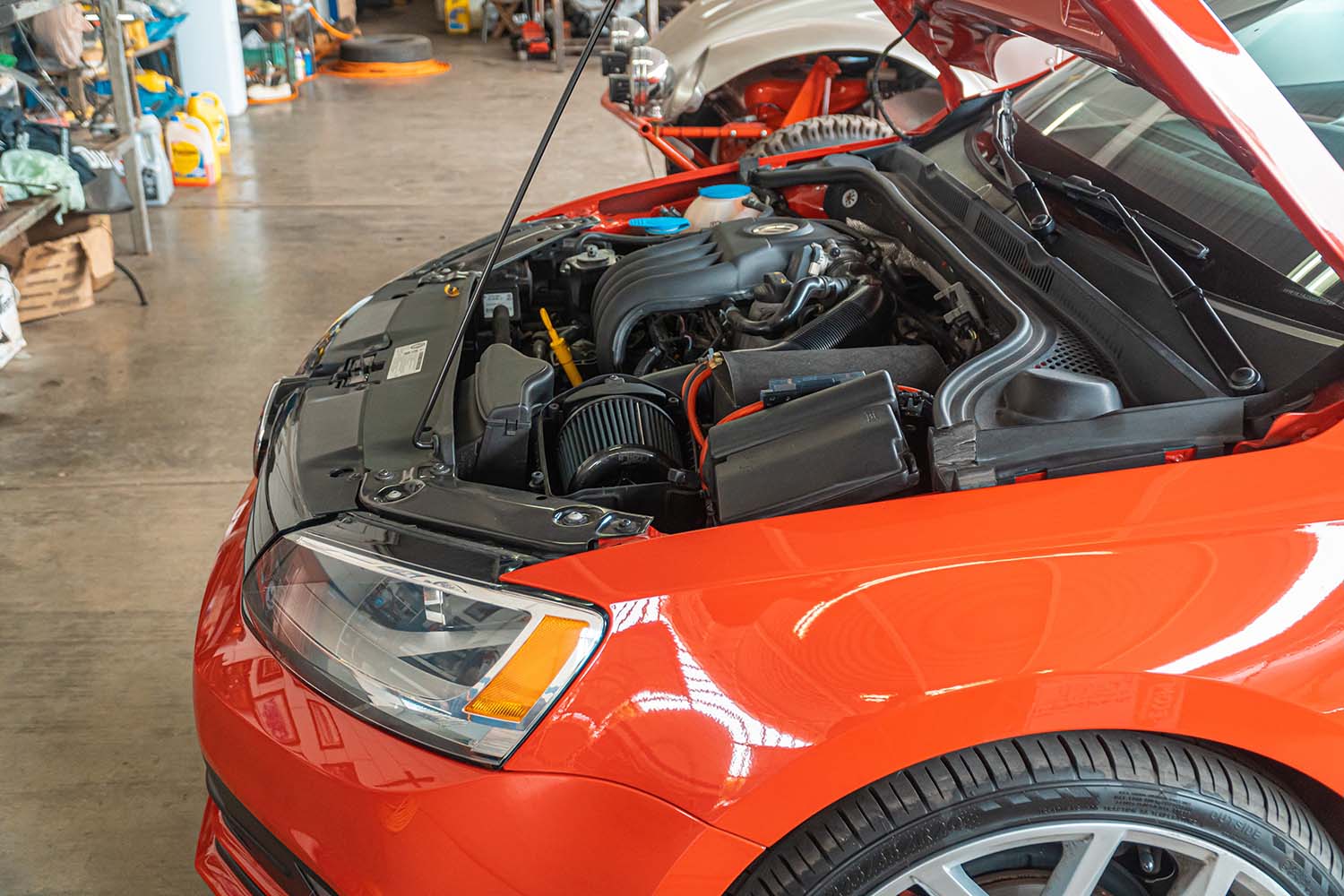Preventive vs. Predictive Maintenance: A Complete Guide
7 min read

General fleet vehicle maintenance and repair are expensive. And the price is only getting steeper. The cost of labor rose by more than 2.5% in the first half of 2021. But labor isn’t the only vehicle expense that’s been on the rise. The general cost of parts also saw a 2.8% bump, with specific parts costs like transmissions rising by 9% and tires by over 10%.
You can’t eliminate all of your maintenance costs. But you can mitigate the financial impact by minimizing the number of repairs your fleet needs to keep operating. Focusing on preventive maintenance and predictive maintenance—rather than reactive maintenance—will keep your equipment in working order and help you identify problems before they lead to breakdowns or equipment failure.
Jump to the section that most interests you:
- What Is Preventive Maintenance?
- Preventive Maintenance vs. Predictive Maintenance
- 3 Benefits of Preventive Maintenance
- 3 Types of Preventive Maintenance
- When to Use Preventive vs. Proactive Maintenance
- How to Use Software to Optimize Your Maintenance Program
- FAQs About Preventive Maintenance
What Is Preventive Maintenance?
Preventive maintenance encompasses all of the routine tasks and practices a business uses to keep equipment running properly and avoid corrective maintenance for things like machine failure. This includes a wide variety of activities, which will vary depending on the specific equipment and its uses. For example, preventive maintenance for a delivery truck includes tasks focused on maximizing the vehicle’s lifespan, like regular oil changes and wheel alignments. It also includes general equipment checks, like monthly tests to ensure brake lights and turn signals are all working.
What is predictive maintenance?
Predictive maintenance is also called “proactive maintenance.” It is a type of upkeep that has a similar goal to preventive maintenance but looks a bit different in practice. Unlike preventive maintenance, these predictive tasks do not rely on routine best practices. Instead, predictive maintenance is more sporadic, only happening when the equipment needs it. For example, a trucking company will only replace its fleet’s tires when the tread begins to wear down and top off fluids when they are low.
Preventive Maintenance vs. Predictive Maintenance
Preventive and predictive maintenance both work to maximize the lifespan of equipment. However, while both types of upkeep work to maintain your tools, the way you schedule them and how they extend the lifetime of your tools set the two practices apart from each other. Preventive maintenance relies on best practices, which are usually scheduled based on intervals of time or based on usage. The primary goal of this type of equipment care is to ensure it is always operating in optimal condition. Meanwhile, predictive maintenance tasks happen when your equipment needs it, which means you’ll rely on data about the condition of your tools to schedule it. This type of upkeep helps identify problems before they turn into larger problems that require costly repairs.
3 Benefits of Preventive Maintenance
Preventive maintenance helps improve productivity as well as fuel efficiency. It also helps you to identify and resolve equipment issues before they become bigger and more expensive problems.
Maximize the lifespan of your assets
Even small maintenance activities can have a profound impact on the life of your assets. And the longer you can use your equipment, the more money your business will save. For example, a single commercial truck tire costs an average of $500. You can’t make one set of tires last forever, but you can make sure your tires last as long as possible, so you only buy a new set when you have to. Properly inflated tires last longer than those that are under or overinflated. Preventive maintenance tasks like checking pressures and inflating tires every week will help extend their lifespan and save you money.
Improve productivity
Unforeseen problems with the tools you use can lead to major delays that have ripple effects on the rest of your business operations. This is why it’s important to focus on preventive maintenance for all of your tools, not just the vehicles and physical machinery. For example, imagine the software your dispatchers use to plan delivery routes and provide directions to drivers is out of date. An out-of-date system will take longer to generate and load delivery routes, slowing down dispatchers and increasing the time it takes to complete delivery planning. Preventive maintenance planning helps you avoid slowdowns like this by helping you stay on top of system updates.
Reduce unplanned maintenance
In a mild scenario, unplanned maintenance is an inconvenience. But in a worst-case scenario, it leads to equipment downtime that disrupts essential business operations. For example, if an engine in one delivery vehicle overheats early in the day, you’ll be left with a truckload of delayed deliveries. This means you’ll have to dispatch maintenance to repair the vehicle, if possible, or send a tow truck to pick it up. You’ll also have to reschedule all of the delayed deliveries, complicating your delivery plans and disappointing customers. And if more than one truck breaks down, these obstacles will be even more difficult to overcome. Fortunately, problems like this are often avoidable.
Regular planned maintenance ensures you’re able to do all the tasks you need to maintain your equipment without forcing you to change or stop operations. For example, regular oil changes remove dirt and debris that cause engines to overheat. Oil changes also help improve fuel efficiency over the length of a vehicle’s life, which means delivery vehicles won’t make as many stops for gas and can spend more time completing deliveries.
3 Types of Preventive Maintenance

You can separate preventive maintenance work into three different types based on the strategy used to schedule maintenance: usage-based, time-based, and condition-based. The most effective maintenance planning and scheduling practices will rely on all three types of maintenance to keep equipment running at its optimal levels.
Usage-based
Usage-based maintenance refers to tasks that you schedule and complete based on how frequently you use a specific piece of equipment. To plan these types of activities, start by defining how many times your team uses the equipment before the maintenance happens. For example, you could dictate that your team schedule tasks for your delivery fleet based on the manufacturer’s recommendations. This could include completing oil changes every 5,000 miles or replacing the air filter every 15,000 miles.
Time-based
Time-based maintenance is one of the most common types of preventive equipment support. A maintenance team schedules these types of tasks based on the calendar, which is why it is often also referred to as “calendar-based maintenance.” Time-based activities for fleet vehicles include yearly vehicle inspections that provide you with insight into the health of your trucks. It also includes seasonal practices, like swapping all-weather tires for winter tires.
Condition-based
Condition-based maintenance refers to upkeep tasks that are scheduled based on factors like how old a piece of equipment is and how well it is operating. These types of maintenance jobs include things that maintenance technicians can’t rely on the calendar or usage metrics to schedule. For example, a delivery company likely can’t rely on manufacturer time estimates or a vehicle’s miles driven to determine when it’s time to replace a truck’s tires. That’s because how quickly a tire’s tread wears down can vary depending on factors like how smooth the surface of the road is and how heavily a truck is weighed down with cargo.
When to Use Preventive vs. Proactive Maintenance
All businesses need to implement preventive strategies to ensure vehicles and other equipment work well. To maximize the effectiveness of these regular maintenance activities, teams need to prioritize both calendar-based and usage-based upkeep. This means developing a schedule for calendar-based tasks and defining conditions that will trigger usage-based maintenance.
Predictive or proactive maintenance will not occur as frequently as other types of upkeep because technicians will schedule these tasks on an as-needed basis. Maintenance team members often implement condition monitoring practices to determine when they will schedule and perform these tasks. They can also rely on maintenance metrics and keep an eye out for maintenance work orders to identify which equipment needs upkeep.
How to Use Software to Optimize Your Maintenance Program
Planning and scheduling upkeep for your tools is vital for the success of your business because it ensures no equipment maintenance gets overlooked. But overseeing all of your equipment for effective maintenance management requires knowledge about the full scope of your business operations. After all, you won’t know when to schedule usage-based tasks if you don’t know how often a piece of equipment is in use. And the more tools you have to maintain, the more complicated and time consuming tracking these details becomes. Relying on software makes all of this easier by providing you with data to inform maintenance needs.
For example, relying on a route planning tool like OptimoRoute can help you track key details like mileage to help schedule usage-based maintenance tasks like oil changes. OptimoRoute also allows you to plan driver and vehicle schedules weeks at a time, which means you’ll know which vehicles will be out on delivery and when. These kinds of details will make it easy to plan upkeep around what you already have scheduled, ensuring your maintenance will never interfere with business operations.
Read our guide to inspection management software to learn more about tools that can help keep your business operating at its optimal levels and stay compliant with regulations like OSHA. Or sign up for a free, 30-day trial of OptimoRoute to see how it can help streamline your planning and maintenance management practices.
FAQs About Preventive Maintenance
In this section, we’ll answer a few common questions about preventive and predictive maintenance.
What are the different types of preventive maintenance?
The three types of preventive maintenance include usage-based, time-based, and condition-based maintenance.
Why does my business need preventive maintenance?
Preventive maintenance helps organizations avoid unplanned maintenance and equipment downtime, which helps boost productivity. It also helps organizations save money by identifying problems before they lead to equipment failure, which saves organizations money by reducing the risk of costly repairs.
What is proactive maintenance?
Proactive maintenance is also known as condition-based maintenance. Its goal is to provide the upkeep equipment needs based on how it operates, helping to prevent unplanned downtime and extending the lifespan of your tools.
Try OptimoRoute™ for Free
No installation or credit card required


